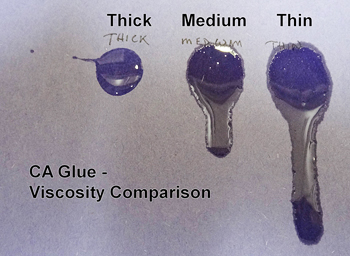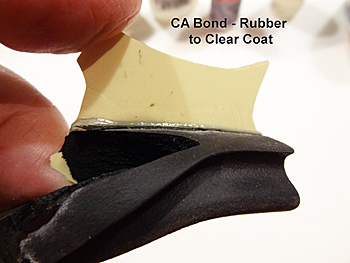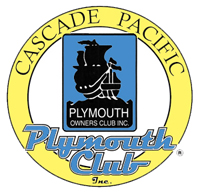More detail on Cyanoacrylate Adhesives
By Phil Lapin / Technical Committee and President
Click on images to see larger versions.
 In March and April of 2018, I wrote articles about various types of adhesives that could be of use on vintage autos. One of the classes of adhesives is Cyanoacrylate Adhesives, better known as “CA” adhesives or glue. This material became famous when it was marketed as “Super Glue” many years ago. I thought it might be of interest to go into the features of this product in more detail – so “stick around” and read on!
In March and April of 2018, I wrote articles about various types of adhesives that could be of use on vintage autos. One of the classes of adhesives is Cyanoacrylate Adhesives, better known as “CA” adhesives or glue. This material became famous when it was marketed as “Super Glue” many years ago. I thought it might be of interest to go into the features of this product in more detail – so “stick around” and read on!
First off – this product can be dangerous if not handled properly! It is best to wear disposable gloves when using it – even if you don’t think you will need them. The glue sets so fast that it is not uncommon to press something in place, or try to wipe the glue up. Bingo – stuck to your skin. When using more than a couple of drops in a small area – the fumes are VERY bad. Saturating porous materials makes it worse, as it can rapidly heat up and release vapors. But when handled properly, it has many wonderful uses on cars.
The picture of “bottles” shows my arsenal of CA products. There are thick, medium and thin formulations that I use, a solvent remover in case it gets on your skin, as well as both a small bottle and a spray bottle of accelerator. I have also shown a disposable syringe with a blunt tipped needle (from Amazon). The accelerator will set the glue almost instantly (it will not normally set instantly when pressed between two smooth surfaces or applied thickly) Accelerator works great, but can cause small bubbles in the glue, and it can damage some surfaces when applied from a spray bottle. The small syringe with liquid accelerator is good for applications with sensitive surfaces, as it can be dribbled right onto the glue.
This glue is NOT inexpensive. Each of the three CA bottles shown runs around $10. It also has a shelf life typically under a year – and thickens somewhat over time. Don’t overbuy – and for most applications medium works well. I use the thin formulation least – as it will penetrate and run very rapidly, not building up much mass. It can get away from you and there is no going back! Hobby stores may carry CA products, as do major woodworking chains such as Rockler and Woodcrafters.
 I have shown another image with small applications of each viscosity onto porous craft type paper. The difference between thick and medium is obvious. Thin is a bit deceptive – mostly because it was impossible to put just a few drops on – and it saturated the paper. Normally, thin would not puddle up.
I have shown another image with small applications of each viscosity onto porous craft type paper. The difference between thick and medium is obvious. Thin is a bit deceptive – mostly because it was impossible to put just a few drops on – and it saturated the paper. Normally, thin would not puddle up.
So where to use it on your vintage vehicle? With thick, you can stick down vinyl and cloth if careful, as well as welting of various types. Of course, metal to metal and adhesion to plastic and glass are also viable. Using either thick or medium, you can bond rubber (weatherstripping, trunk seals, gaskets) to metals as well as clearcoat surfaces. It works great for putting on weatherstripping around doors. An added bonus using CA is that the bond between rubber and painted doors is almost invisible due to the transparency of the glue. No more fighting with sticky black weather strip adhesive. (Thank you to Doug Crawford for that tip!). The last picture shown is one of a piece of high quality Steele Rubber weather strip bonded to a clear coat auto paint. I tried to peel the rubber off the clear coat – and it tore the rubber in half! Very good bond.
 I hope that these insights will help you around your garage. Of course, there are a bunch of uses for CA around the entire house. Just be very careful when handling it!
I hope that these insights will help you around your garage. Of course, there are a bunch of uses for CA around the entire house. Just be very careful when handling it!


